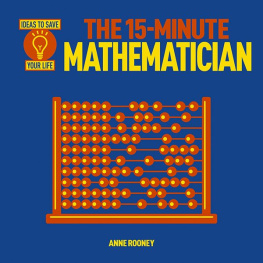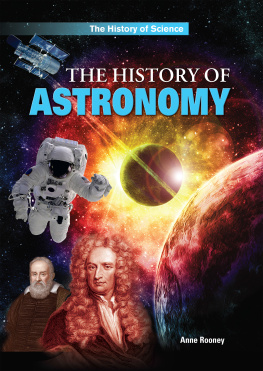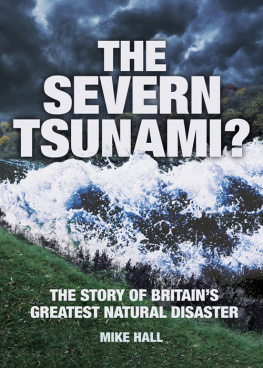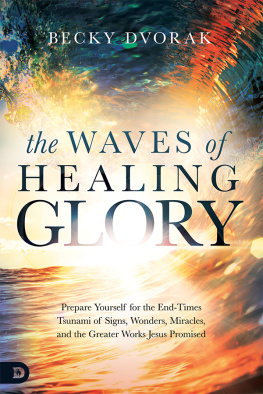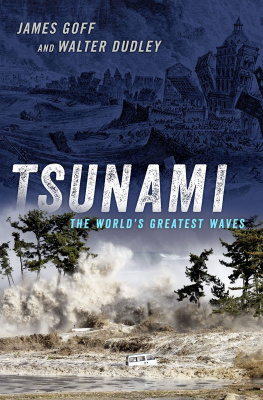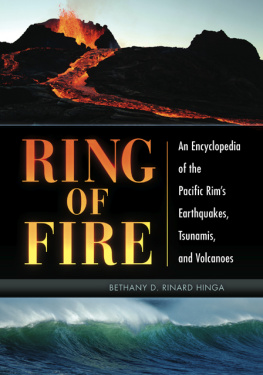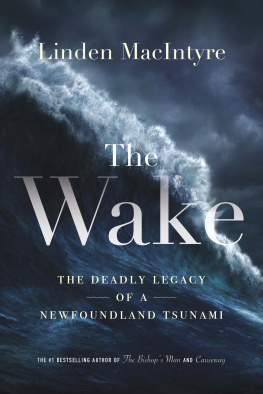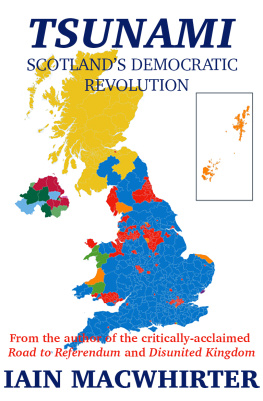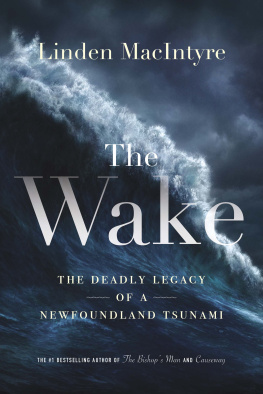Anne Rooney - Tsunami!
Here you can read online Anne Rooney - Tsunami! full text of the book (entire story) in english for free. Download pdf and epub, get meaning, cover and reviews about this ebook. year: 2006, publisher: Encyclopaedia Britannica;Britannica Digital Learning, genre: Politics. Description of the work, (preface) as well as reviews are available. Best literature library LitArk.com created for fans of good reading and offers a wide selection of genres:
Romance novel
Science fiction
Adventure
Detective
Science
History
Home and family
Prose
Art
Politics
Computer
Non-fiction
Religion
Business
Children
Humor
Choose a favorite category and find really read worthwhile books. Enjoy immersion in the world of imagination, feel the emotions of the characters or learn something new for yourself, make an fascinating discovery.

- Book:Tsunami!
- Author:
- Publisher:Encyclopaedia Britannica;Britannica Digital Learning
- Genre:
- Year:2006
- Rating:4 / 5
- Favourites:Add to favourites
- Your mark:
- 80
- 1
- 2
- 3
- 4
- 5
Tsunami!: summary, description and annotation
We offer to read an annotation, description, summary or preface (depends on what the author of the book "Tsunami!" wrote himself). If you haven't found the necessary information about the book — write in the comments, we will try to find it.
Tsunami! describes how earthquakes and volcanoes cause deadly waves, the devastation they inflict on communities and the environment, and why they are so difficult to predict.
Tsunami! — read online for free the complete book (whole text) full work
Below is the text of the book, divided by pages. System saving the place of the last page read, allows you to conveniently read the book "Tsunami!" online for free, without having to search again every time where you left off. Put a bookmark, and you can go to the page where you finished reading at any time.
Font size:
Interval:
Bookmark:

E-book published in 2012 by Encyclopdia Britannica, Inc., in association with Arcturus Publishing Limited, 26/27 Bickels Yard, 151-153 Bermondsey Street, London SE1 3HA. Britannica, Encyclopdia Britannica, and the Thistle logo are registered trademarks of Encyclopdia Britannica, Inc.
ISBN: 978-1-61535-652-2 (e-book)
This edition first published by Arcturus Publishing
Distributed by Black Rabbit Books
123 South Broad Street
Mankato
Minnesota MN 56001
Copyright 2006 Arcturus Publishing
All rights reserved
Library of Congress Cataloging-in-Publication Data
Rooney, Anne.
Tsunami! / by Anne Rooney
p. cm. -- (Natures fury)
Includes index
1. Tsunamis--Juvenile literature. 2. Natural disasters--Juvenile literature. I. Title
GC221.5.R66 2007
363.3494--dc22
2006022605
9 8 7 6 5 4 3 2
Editor: Alex Woolf
Design: Minds Eye Design
Picture Research: Shelley Noronha
Picture credits
Corbis: 4, 7, 16 (Punit Paranjpe/Reuters), 18 (Kim Kyung-Hoon/Reuters),
22 (Lloyd Cluff), 23 (Sukree Sukplang/Reuters), 24 (Babu/Reuters),
26 (Wolfgang Kaehler), 27 (Bazuki Muhammad/Reuters)
Rex Features: 10 (Sipa Press), 14 (Sipa Press), 15 (Sipa Press),
17, 19, 20 (SS/Keystone USA), 21, 29 (Twentieth Century Fox/Everett)
Science Photo Library: 5 (Chris Butler), 6 (US Geological Survey),
8 (Gary Hincks), 9, 11 (David Hardy), 12 (Sally Bensusen),
13 (Carlos Munoz-Yague/LDG/Eurelios), 28 (John Foster)
Zul Mukhida: 25
A tsunami is a huge wave that can flood the land with devastating effects. The word tsunami is Japanese for harbour wave. It is an appropriate name since it is when a tsunami hits a harbor or other area used by people that its destructive power is felt. A tsunami can flood towns and villages with little warning, destroying all in its path and killing people and animals. When the wave retreats, everything can be swept out to sea.
Tsunamis through time
Tsunamis have probably been around as long as the sea. One of the earliest descriptions was left by the Greek historian Thucydides, who described a tsunami in the Mediterranean Sea near Greece in 426 BCE : The sea returned in a huge wave and invaded a great part of the town, and retreated, leaving some of it still underwater; so that what was once land is now sea; such of the inhabitants perishing as could not run up to the higher ground in time. Thucydides linked the tsunami to recent earthquakes in the areamodern scientists would do the same.

A tsunami floods houses in Oahu, Hawaii, in 1957.
What causes tsunamis?
Tsunamis are caused by a disturbance in or under the sea that makes a large volume of water move suddenly. Most are caused by earthquakesthough landslides, volcanic eruptions, and even meteorites falling into the sea can cause tsunamis. Waves flow outward in a circle from the point where the disturbance happenslike ripples spreading from a stone dropped in a pond.

A tsunami can have devastating effects if it strikes an area where people live and work.
 CASE STUDY
CASE STUDY
When the sea and sky fell
Modern geologists point to evidence of a tsunami caused by a meteorite striking the Tasman Sea between 500 and 850 years ago. This may explain a legend told by the people of Burragorang in New South Wales, Australia. One steamy, hot night, the people lay unable to sleep in their camp. Just after sunset, the sky shuddered, heaved, and tumbled, crashing down on them. The Milky Way split and stars fellincluding a gigantic, burning blue star that tore the ground apart, showering the people with chunks of earth and rock. Later, other tribes told of the whole ocean falling on them from above. It then rained for weeks, and the whole land was flooded. The native peoples believed these events were caused by an angry ancestor in the sky.
T sunamis can happen anywhere, but most occur around the Pacific Ocean. Volcanic eruptions and earthquakes are very common around the edges of the Pacific, both inland and just off the coast, and these can trigger tsunamis that spread across the whole ocean.
Inland tsunamis
Tsunamis can even happen in an inland sea or lake. Many tsunamis have formed in the Mediterranean Sea, which is mostly enclosed by Europe and North Africa. Earthquakes and volcanic activity around Italy and Greece have caused some disastrous tsunamis through history, including some believed to have destroyed ancient Greek and Minoan cities thousands of years ago.
Smaller bodies of water, such as lakes and rivers, can also be affected by tsunamis. In 1811, New Madrid, Missouri, was struck by the largest earthquake in recorded American history and the flow of the Mississippi River was reversed. The eruption of Mount St. Helens in Washington State in 1980 caused a tsunami on nearby Spirit Lake.

The Ring of Fire is a zone prone to earthquakes and volcanic eruptions that circles the Pacific Ocean.
Landfall
A tsunami can strike land a long way from the event that causes iteven on the other side of the ocean. In 1946, a tsunami that struck the Hawaiian Islands in the middle of the Pacific Ocean was caused by an earthquake in the Aleutian Trench, off the coast of Alaska, five hours earlier. The earthquake was over 2,400 miles (4,000 kilometers) from Hawaii.
When a tsunami strikes a region that didnt feel the earthquake, it can seem to come from nowhere. When it reaches the shore quickly and near to the source of the earthquake or eruption, it brings new devastation to an area hit only minutes before.
 EARTHS JIGSAW PUZZLE
EARTHS JIGSAW PUZZLE
The surface, or crust, of the Earth is divided into chunks called tectonic plates that fit together in a giant jigsaw puzzle. The crust is made up of seven large plates and several smaller ones. The Pacific Ocean is held on a single vast plate.
Within the earth, semi-liquid, red-hot rock moves very slowly around the globe, dragging the plates with it. At the joins between plates, they rub or push against each other. These are geologically active areas where earthquakes and volcanic eruptions happen.

A lone man watches the approach of the tsunami that swept him away on Hilos Pier 1 in Hawaii in 1946.
T he earths tectonic plates move slowlyabout the same speed as your fingernails grow. But where the plates push or grind together, pressure can build up over years or centuries. When the tension becomes too great, the plates slip with a jolt, causing an earthquake.
Next pageFont size:
Interval:
Bookmark:
Similar books «Tsunami!»
Look at similar books to Tsunami!. We have selected literature similar in name and meaning in the hope of providing readers with more options to find new, interesting, not yet read works.
Discussion, reviews of the book Tsunami! and just readers' own opinions. Leave your comments, write what you think about the work, its meaning or the main characters. Specify what exactly you liked and what you didn't like, and why you think so.


